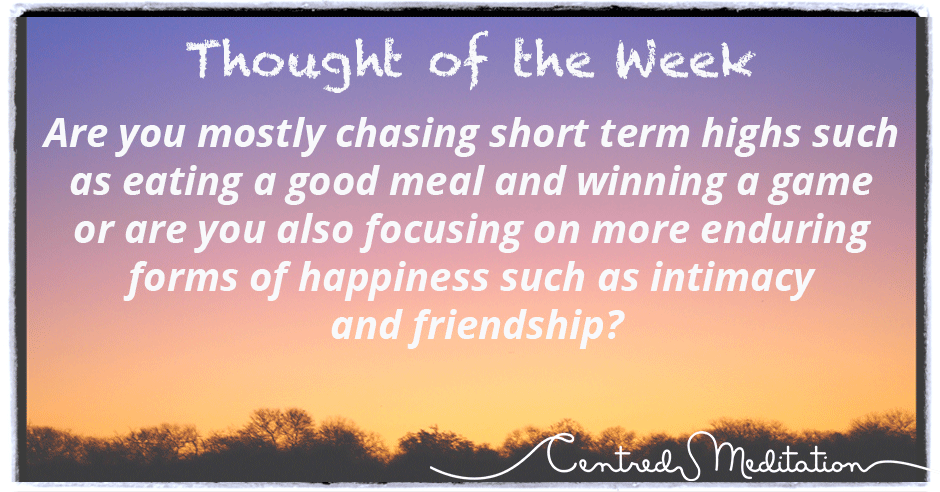At any given moment there’s an intricate concoction of chemicals inside our bodies dictating how we feel. Certain behaviours trigger the release of certain chemicals in our brain. Since past experience has taught us that doing certain things directly result in feeling good, we tend to do those things more often because as obvious as it sounds, it feels good to feel good and it feels bad to feel bad. In fact, the entire animal kingdom is unified by this common drive to seek pleasure and avoid pain.
If you look a little closer though, you’ll realise that not all forms of “feeling good” were created equal. And some are more beneficial and sustainable than others.
Here are two different versions of feeling good:
1. The short-lived high
This one you are all too familiar with. It arises when you get a surprise, win a game, eat, have an orgasm, and discover something new. The culprit that is responsible is the hormone dopamine.
Now don’t get us wrong, dopamine has incredible effects. It offers an intense pleasure or thrill and it is accompanied with high attention, improved short-term memory, elation, boldness and a temporary desire to explore the world and take risks. The reason we call it a culprit though is that it has a huge downfall of being relatively short-lived. To make matters worse, as it wears off, it is quickly replaced with another hormone called prolactin which causes the polar opposite effects: depletion, irritability, and depression. What’s more, perceived scarcity of a dopamine-giving object or experience can cause fear and stress along with a feeling as if something is constantly missing from our lives. The bad news is that since dopamine feels SO good at the time, we are compelled to continuously chase it’s high even though it never truly brings long lasting contentment or satisfaction.
Conclusion: dopamine runs the risk of becoming highly addictive and it is downright unsustainable as a reliable source of continual happiness.
2. The more sustainable rise
There’s another type of ‘good feeling’ that you’re certainly aware of and that’s the one that comes with receiving physical affection, watching an emotionally compelling movie, singing with friends, salsa dancing, giving charity, laughing, listening to soothing music, and lactating (for the mothers among us). It’s the hormone oxytocin that we have to thank for this one.
Although oxytocin takes longer to release than dopamine, the plus side is that it’s deeper, it increases freely, and it’s long-enduring. It’s known to be directly linked to human bonding as it increases trust and loyalty. If that’s not enough, it has also been shown to increase immunity, speed up wound healing, slow down cell-aging and increase life-expectancy, mood stability & one’s sense of well-being.
Conclusion: behavious that release a dose of oxytocin are more reliable as a continued source of happiness.
The bottom line is, while dopamine motivates us to take action towards our goals, it can easily turn us into ‘dopamine-junkies’ if we succumb too blindly to it’s effect over us. We should avoid getting attached to the rollercoaster side effects of this short-lived high and favour instead behaviours that trigger the more sustainable rise of oxytocin.


